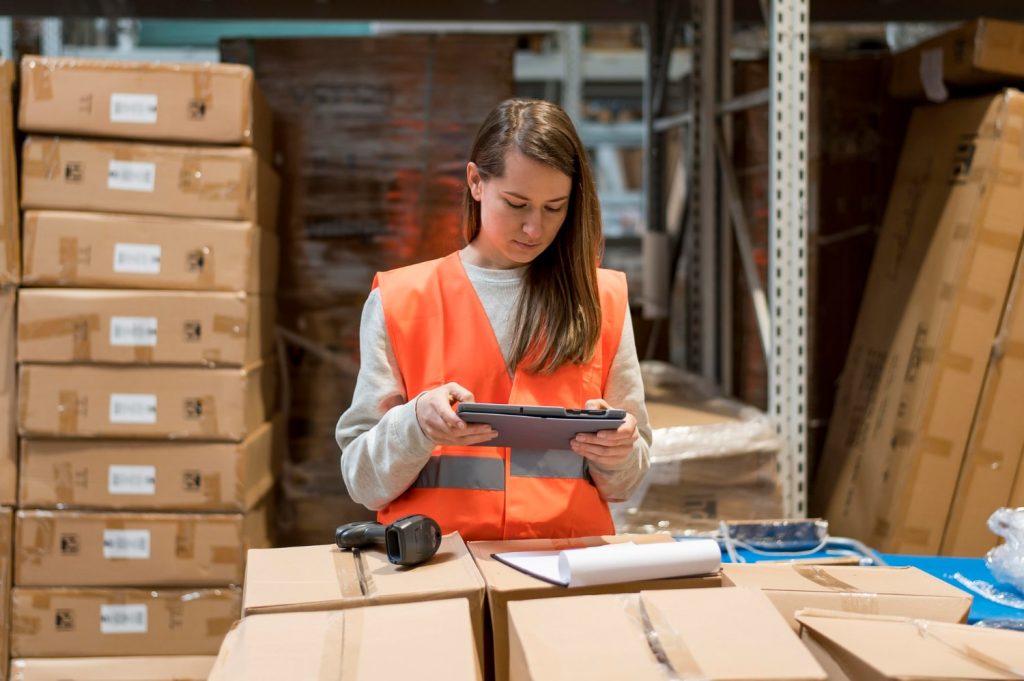68% of consumers have stated that fast shipping can make it more likely for them to place an order. This is dramatically changing how companies approach logistics. For instance, in grocery retail, companies are fulfilling same-day (or next-day) deliveries through MFCs. Increasingly, to elevate the speed of order fulfillment, micro fulfillment centers (MFCs) have emerged as a suitable alternative to centralized distribution centers. Inevitably, companies are automating their MFCs for a variety of benefits including:
- Improved delivery speed and productivity
- Lower operational costs
- Improved customer experience (CX)
- Worker safety
And much more…
From autonomous robotic vehicles (ARVs) to automated picking robots, companies are automating MFCs using various technologies. Automation is the key to improving the accuracy and efficiency of modern MFCs
That said, companies must consider a few crucial factors when automating their MFC. Here are 6 factors that impact the automation strategy in small and big ways:
- Inventory management
Before automating their MFC, companies must consider the impact on their inventory management. Higher stock levels also carry the additional burden of higher storage costs. Besides, they also need to store the right items in the right location to meet customer needs.
Here are some questions to consider before automating inventory management:
- How do you maintain the right balance of inventory items across the entire MFC network?
- How can changes in customer orders impact daily operations and inventory costs?
- Can your transportation network support increased order fulfillment demand after the automation?
- System Integration
Integration with existing systems is an important factor for the successful deployment of an automated MFC. Companies often overlook integrating their MFCs with their ERP or warehouse management – or in certain scenarios, even their Point-of-Sale (PoS) system and order management. System integration often depends on the level of required customization and the role played by your IT team.
Here are some valid questions to address for system integration:
- How can MFCs handle order cancellations or any change in delivery time?
- Can the MFC automatically reconfigure order sequencing and accommodate the changes?
- A solution made for Micro fulfillment
Companies automating their MFCs must also choose the right MFC solution that fulfills their business needs. What works in larger warehouses and distribution centers will not work in MFCs. That’s why an automated MFC solution must fully assess and understand the end-to-end order fulfillment strategy and tie into it deeply.
For instance, which are the areas of improvement – and what is the current state of distribution?
Here are some things to consider when choosing the right automation solution for the MFC:
- Identifying operational areas that demand more attention. For example, higher order fulfillment duration.
- Identifying the areas that need to scale to accommodate higher demand.
- Creating a business case for improving labor productivity and cost-efficiency.
- Evaluating a solution with the right functionalities, budgets, and implementation time.
- Delivery time and radius
Delivery time and radius of operations are additional factors to consider when automating MFCs.
For customers who expect same-day deliveries, it’s practical for companies to locate their MFCs near the customer. However, when order volumes are low, it’s more beneficial for companies to follow the “centralized” delivery model. For instance, a central dark store.
Similarly, for a large delivery radius, a centralized order fulfillment model works out more expensive for companies. For instance, U.S.-based locations (with low population density) cannot justify the investment in a centralized facility.
- Operational factors
Additionally, there are multiple operational factors to consider when automating MFCs. Some of these factors include:
- The volume of daily orders to fulfill
- The number of unique SKUs to store in the facility
- Service level agreements like same-day or 2-day shipping
- Type of products and their unit measurements (for instance, inches, pallets)
Every business case is unique and different, thus requiring a different automation strategy. For example, Robotic packaging is suitable for high-volume batch orders.
Here are some operation-related questions to address for fresh and temperature-controlled grocery or pharmaceutical products:
- What is the SKU percentage that requires cold versus ambient storage temperatures?
- Can you maintain the right temperature for products waiting to be packed and picked?
- Location of the MFC
An underperforming retail store can be repurposed to serve as an MFC facility. Depending on the location, companies have talked about converting available retail spaces into order fulfillment centers. An important factor is that in selected scenarios, they need to “rezone” the retail property, thus increasing the project time and costs.
Another location-related factor is the facility’s proximity to the main highways for transportation and the typical routes used for deliveries. Automation must also address site requirements such as property insurance and facility preparation.
Conclusion
To summarize, companies need to understand their holistic needs before automating their MFCs or order fulfillment process. Without this exercise, they cannot leverage automated solutions to build business agility, delivery speeds, and cost-effectiveness.
At Cartesian Kinetics, we believe in the power of automation – and why it’s necessary for modern retailers and logistics companies in the domain of order fulfillment. Our flagship automation solution, Carte+ addresses each of the factors (outlined in this blog) when automating MFCs.
Can our order fulfillment solutions make a difference? Let’s find out. Reach out to us today!


